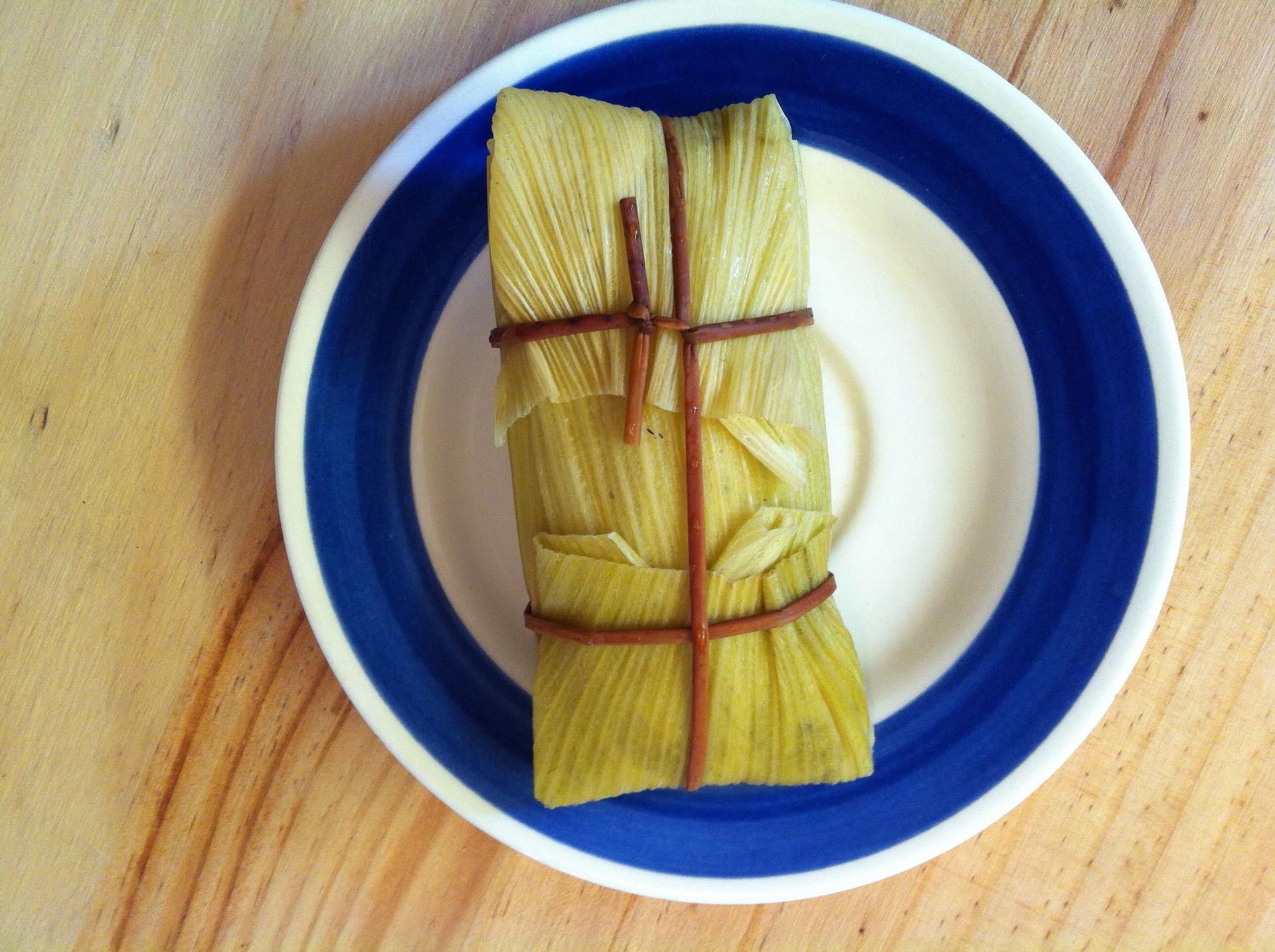Here’s why some Peruvians are giving up jobs as lawyers and accountants to become chefs
A green tamale — filled with chicken and cilantro — made by Karina Medina, and sold on the street in Lima.
Karina Medina has sold tamales — warm corn cakes, filled with spices and bits of meat steamed in corn husks or banana leaves — on a street corner in Lima since she was 9.
Each morning she sets a big basket of them under an umbrella. It's a pretty simple setup, but Medina has a steady stream of customers and can sell hundreds of tamales on any given day. She gives some of the credit for that to Peru's most famous chef, Gastón Acurio, who's a big promoter of Peruvian food. A few years back, Acurio started to talk up Karina's tamales.
“It meant more prestige for us,” Karina says. “People started to come from other parts of the city, and bit by bit we got more customers.”
Not so long ago, Peru was not really a place many people wanted to visit. There was the civil war and terrorism in the 1980s, and an economic crisis in the ’90s. But now the war is over, tourism is strong — and so is the economy. In recent years, Peruvian cuisine has also been on the rise. It's complex and varied, with influences from indigenous culture as well as Spain, Italy, Japan, China and more.
Gregor Funcke, a chef who teaches at the Cordon Bleu in Lima, recently helped launch a Peruvian restaurant in London. He says many Peruvians now aspire to be chefs. It’s become so prestigious that many working-class kids are leaving traditional jobs, as lawyers or accountants, to pursue careers as chefs.
“We have students that come from outside of Lima to study here [at the Cordon Bleu]” he says. “And we have students from wealthy families that come. It's amazing to see them work together.”
But Julio Hevia, a psychologist, says Peruvians embracing their cuisine is about more than just the food, or even cultural diversity.
“It's a way of compensating, of escaping, of disconnecting,” Hevia says, “of inhabiting something like the Matrix — a parallel reality. I've always felt that in our culture we have a sense of a parallel reality.”
Hevia says that was especially true during the civil war. But back then, Peruvian food was something you mostly ate at home. Going out on the street was risky; there weren't many restaurants in Peru; and according to Gregor Funcke, the few that existed were not great.
“I still remember when the first KFC opened up in Lima. It was amazing, because we didn't have anything like that. It was junk food, but we had to wait almost 10 years for almost anything else to come, for young chefs in Peru to build up any restaurants that were worth it,” he says.
Rusbel Gala, 24, cooks at his family’s restaurant, Gala. He’s from a rural, working-class family. Last year, he won the best young chef competition at Mistura, a culinary festival in Lima, one of the most important food events in Latin America.
Gala says he spent two months researching and testing his winning dish. It was a salmon steak, encrusted in kiwicha — an Andean grain with a light, nutty flavor. It came with a pumpkin-and-quinoa puree. There was a Chinese- and French-influenced beef demi-glace, and he finished it with a reduction of ayrampo — a deep magenta Andean berry that tastes like a cross between blackberries and sour cherries.
“Cooking is really competitive here now,” Gala says. “There are a lot of young people who want to get ahead and be recognized to be great chefs.”
As Funcke puts it, food has become incredibly important. Not just for chefs or foodies, but for Peru in general.
“As Peruvians, we didn't have a lot to be proud of 20 years ago, or we didn't realize it because we were immersed in a situation here that wasn't very nice,” he says. “So when we found a way to be proud of our land and of our culture, I think we exploited that very well.”
This story was reported in conjunction with our partner program, Radio Ambulante.
We want to hear your feedback so we can keep improving our website, theworld.org. Please fill out this quick survey and let us know your thoughts (your answers will be anonymous). Thanks for your time!
